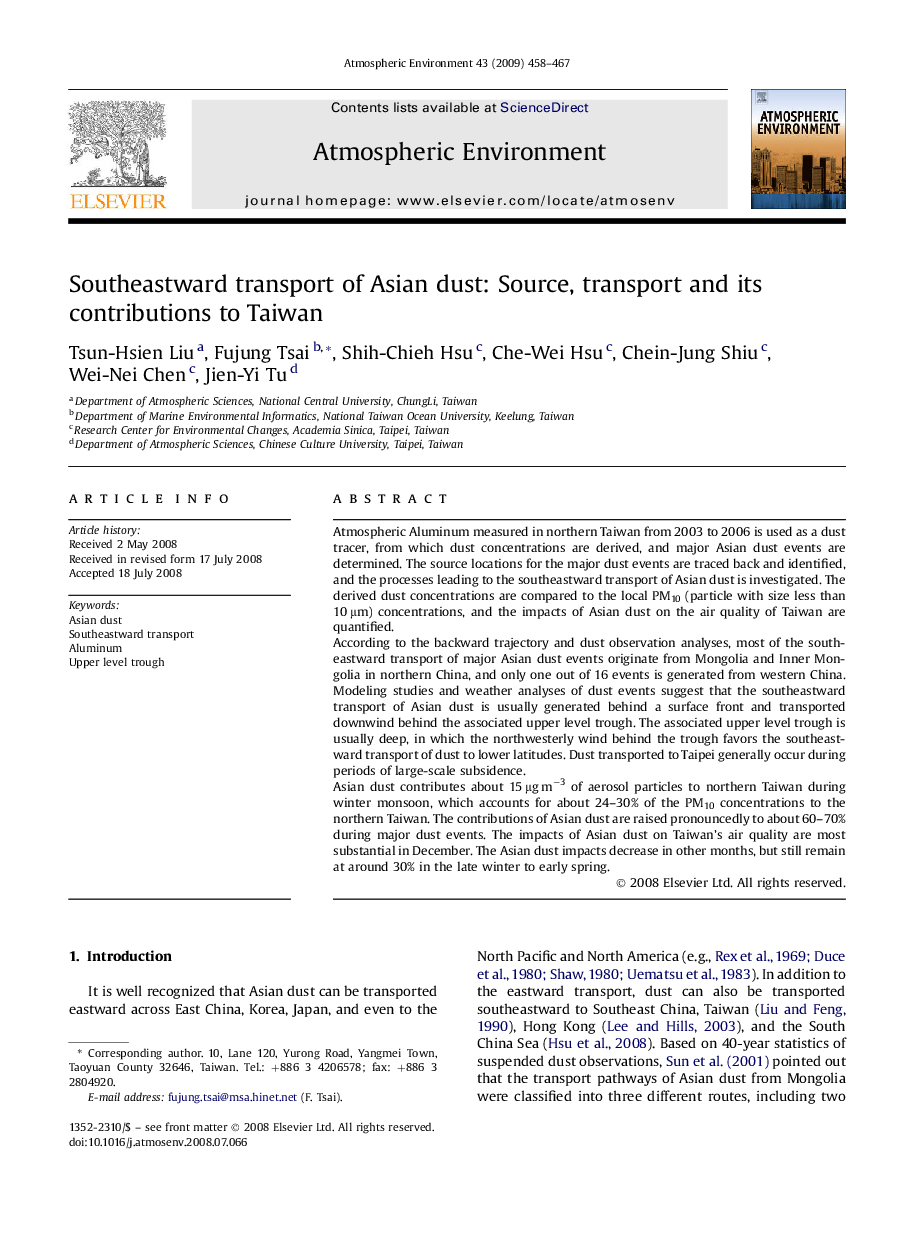| کد مقاله | کد نشریه | سال انتشار | مقاله انگلیسی | نسخه تمام متن |
|---|---|---|---|---|
| 4441283 | 1311100 | 2009 | 10 صفحه PDF | دانلود رایگان |

Atmospheric Aluminum measured in northern Taiwan from 2003 to 2006 is used as a dust tracer, from which dust concentrations are derived, and major Asian dust events are determined. The source locations for the major dust events are traced back and identified, and the processes leading to the southeastward transport of Asian dust is investigated. The derived dust concentrations are compared to the local PM10 (particle with size less than 10 μm) concentrations, and the impacts of Asian dust on the air quality of Taiwan are quantified.According to the backward trajectory and dust observation analyses, most of the southeastward transport of major Asian dust events originate from Mongolia and Inner Mongolia in northern China, and only one out of 16 events is generated from western China. Modeling studies and weather analyses of dust events suggest that the southeastward transport of Asian dust is usually generated behind a surface front and transported downwind behind the associated upper level trough. The associated upper level trough is usually deep, in which the northwesterly wind behind the trough favors the southeastward transport of dust to lower latitudes. Dust transported to Taipei generally occur during periods of large-scale subsidence.Asian dust contributes about 15 μg m−3 of aerosol particles to northern Taiwan during winter monsoon, which accounts for about 24–30% of the PM10 concentrations to the northern Taiwan. The contributions of Asian dust are raised pronouncedly to about 60–70% during major dust events. The impacts of Asian dust on Taiwan's air quality are most substantial in December. The Asian dust impacts decrease in other months, but still remain at around 30% in the late winter to early spring.
Journal: Atmospheric Environment - Volume 43, Issue 2, January 2009, Pages 458–467